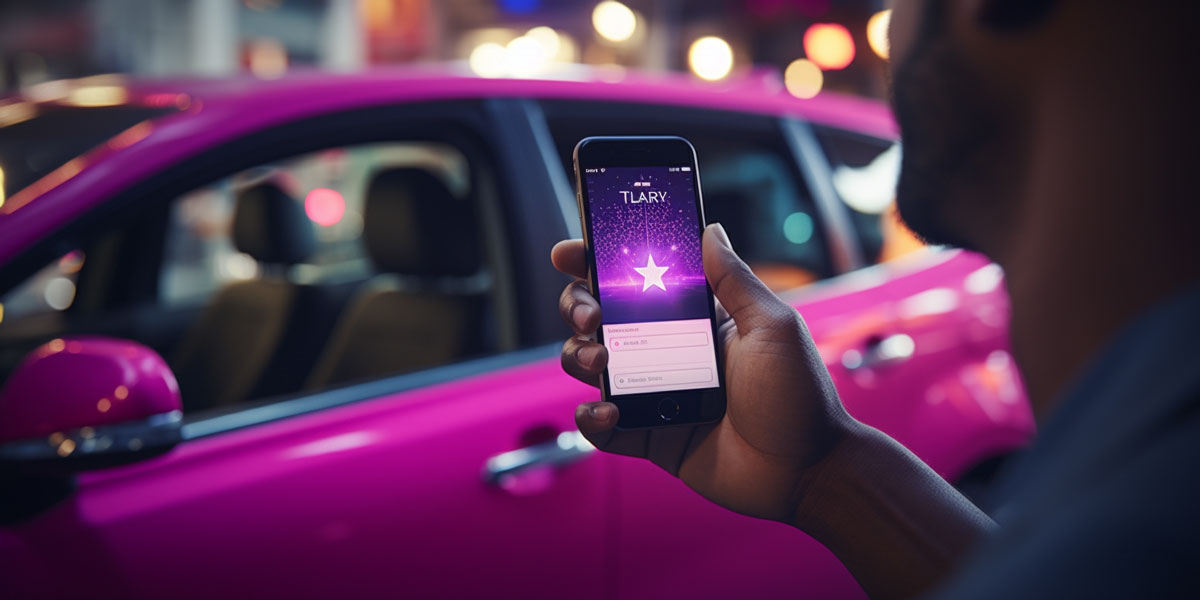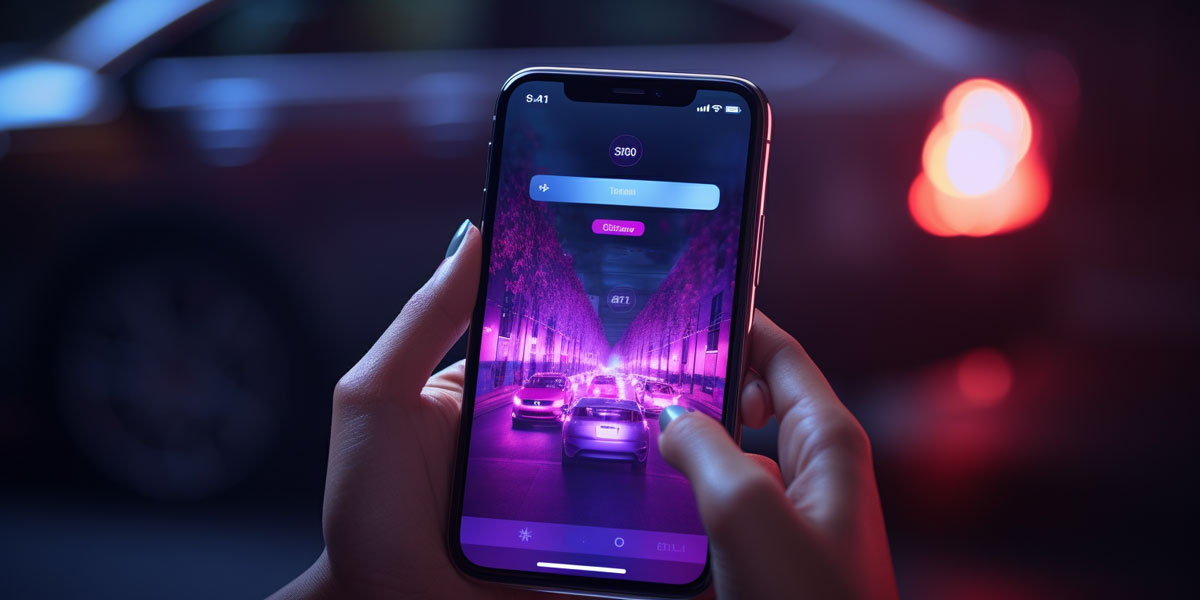Are you considering becoming a Lyft driver, or are you already a part of the Lyft community? If so, you may have heard about Lyft employment verification and its importance.
In this comprehensive guide, we will walk you through everything you need to know about Lyft employment verification, from its purpose and process to the requirements and common FAQs. Let's get started!
What is Lyft Employment Verification?
Lyft employment verification is a crucial step in the onboarding process for all potential drivers. As a rideshare company, Lyft is committed to ensuring the safety and security of its passengers. To achieve this, they carefully verify the identity and eligibility of their drivers.
Employment verification helps Lyft confirm that the individuals applying to become drivers meet the necessary criteria and have a clean driving record.
The primary purpose of Lyft employment verification is to ascertain that aspiring drivers meet the necessary criteria and possess a clean driving record. By conducting thorough background checks and employment verification, Lyft upholds a strong foundation of trust and reliability within its community.
How Does Lyft Employment Verification Work?
The Lyft employment verification process is a meticulously designed series of steps aimed at guaranteeing the authenticity and eligibility of potential drivers. Let's delve into each stage to understand how Lyft ensures a top-tier pool of drivers for their esteemed community:
Step 1: Application Submission
The process kicks off when an individual expresses their interest in becoming a Lyft driver by submitting an application. This comprehensive application encompasses crucial personal information, driver's license details, and a consent form that allows Lyft to conduct essential background checks.
Step 2: Background Check
As part of their commitment to safety, Lyft conducts a thorough background check on each applicant. This extensive review delves into both driving history and criminal records. By carefully scrutinizing an applicant's driving record, Lyft ensures that their drivers have demonstrated responsible and safe driving practices.
Additionally, the criminal records check is essential to ensure that potential drivers have a clean background, further contributing to the trustworthiness of the Lyft community.
Step 3: Employment Verification
Lyft places great emphasis on verifying the employment history of applicants. This step is pivotal in determining the suitability of potential drivers for the role they are about to undertake. By confirming an applicant's employment background, Lyft seeks individuals who possess the necessary qualifications and aptitude to provide top-notch service as a Lyft driver.
Step 4: Vehicle Inspection
Safety is at the core of Lyft's mission, and vehicle inspection is a mandatory component of the verification process. All vehicles intended for Lyft service must meet specific safety standards. Lyft's stringent vehicle inspection ensures that only well-maintained and safe vehicles are utilized to provide rideshare services to passengers.
Step 5: Driver Mentor Session
Recognizing the value of guidance and support for new drivers, Lyft arranges mentor sessions with experienced Lyft drivers. During these sessions, new drivers receive invaluable insights, tips, and tricks that enhance their understanding of the Lyft platform and contribute to their success as Lyft drivers.
Step 6: Activation
Once all requirements have been successfully met, and the applicant has met Lyft's high standards for eligibility, they are officially approved as active Lyft drivers. This is a significant milestone for drivers, marking the commencement of their journey as part of the esteemed Lyft community.
Lyft's employment verification process is the cornerstone of their commitment to delivering a safe, reliable, and exceptional ridesharing experience. By meticulously evaluating each applicant, Lyft ensures that only the most qualified and responsible drivers join their ranks.
Key Requirements for Lyft Employment Verification
To ensure eligibility for Lyft employment verification, potential drivers must meet a set of stringent requirements. Lyft places great emphasis on safety, reliability, and responsible driving practices, making it imperative for applicants to meet the following criteria:
1. Age
Applicants must be at least 21 years old to be considered for Lyft employment verification. This minimum age requirement ensures that drivers have attained a level of maturity and responsibility necessary for providing safe rideshare services.
2. Driving Experience
Lyft requires drivers to possess a minimum level of driving experience to qualify for employment verification. Specifically, drivers must have at least one year of driving experience. However, if the applicant is under 23 years old, Lyft raises the bar by requiring a minimum of three years of driving experience.
This requirement helps ensure that drivers are adept at handling various road conditions and challenges.
3. Valid Driver's License
A valid driver's license is a fundamental requirement for all potential Lyft drivers. This document serves as an official record of an individual's driving privileges and capabilities. Lyft carefully verifies the authenticity of the driver's license to ascertain that it is valid and free from any violations or restrictions.
4. Insurance
Drivers must possess personal auto insurance that meets the minimum requirements mandated by the state in which they plan to operate. This insurance coverage is essential for ensuring protection for both drivers and passengers in case of any unforeseen incidents.
5. Background Check
Lyft conducts thorough background checks on all potential drivers to evaluate their suitability and ensure the safety of passengers. This comprehensive background check includes both criminal and driving record checks.
By reviewing an applicant's criminal history, Lyft can identify any potential safety risks and take appropriate measures to maintain a secure ridesharing environment.
6. Vehicle Requirements
The vehicle used for providing Lyft services must meet specific requirements to ensure the safety and comfort of passengers. Lyft mandates that the vehicle be in good condition, free from any major defects, and comply with Lyft's established safety standards. Before a vehicle can be used for Lyft services, it must undergo a thorough inspection to ensure that it meets all safety criteria.
Lyft's dedication to maintaining a high standard of safety and service is reflected in the stringent requirements for employment verification. By adhering to these requirements, Lyft can confidently welcome qualified and responsible drivers into their community, further enhancing the overall ridesharing experience for passengers and solidifying their position as a leader in the industry.
Why is Employment Verification Important for Lyft?
Employment verification serves as a key pillar of safety and trust in the Lyft community. By conducting thorough background checks and employment verification, Lyft can maintain a high standard of safety for its riders.
Knowing that their drivers have passed these checks instills confidence in passengers, encouraging repeat business and word-of-mouth referrals. Additionally, it also aids Lyft in complying with local regulations and laws related to transportation services.
Employment verification not only bolsters safety and trust within the Lyft community but also enables Lyft to comply with local regulations and laws concerning transportation services. This rigorous screening process instills confidence in passengers, encouraging repeat business and positive word-of-mouth referrals.
How Long Does the Verification Process Take?
The length of the Lyft employment verification process can vary depending on several factors, such as the volume of applications and the complexity of background checks. Typically, the process can take anywhere from a few days to a couple of weeks.
The timeline of Lyft employment verification can be influenced by several factors, each playing a crucial role in determining the duration of the process. As Lyft prioritizes safety, reliability, and thoroughness, it is essential to consider the following factors that may impact the verification timeline:
-
Application Volume: The number of driver applications received by Lyft can significantly impact the verification timeline. During peak periods, such as holidays or when there is a surge in demand for rideshare services, the volume of applications may increase, leading to longer processing times.
-
Background Check Complexity: The comprehensive background checks conducted by Lyft are essential for ensuring the safety and security of passengers. The complexity of these checks, including criminal and driving record reviews, can vary based on an applicant's history. Applicants with a more intricate background may require additional time for verification.
-
Verification Process Accuracy: Lyft prioritizes accuracy and thoroughness in their verification process. While it may take some additional time, ensuring that all details are meticulously reviewed and confirmed contributes to the overall safety and trustworthiness of the Lyft community.
-
State Regulations: Different states may have varying requirements and regulations for rideshare drivers. Lyft must ensure that each applicant complies with the specific requirements of their respective states. This may introduce variations in the verification timeline.
-
Driver's Response Time: The timeline can be affected by how promptly applicants respond to any inquiries or requests for additional information. Delays in receiving necessary information from applicants may extend the verification process.
-
Background Check Provider: The timeline can also be influenced by the efficiency and responsiveness of the third-party background check provider used by Lyft. Any delays or issues on their end can impact the overall verification process.
-
Vehicle Inspection: Verifying that a vehicle meets Lyft's safety standards is an integral part of the process. Scheduling and conducting vehicle inspections can add time to the overall verification timeline.
Frequently Asked Questions
1. Is Lyft employment verification necessary for every driver?
Yes, all potential Lyft drivers must go through the employment verification process to ensure they meet the required criteria.
2. Can a criminal record automatically disqualify me from becoming a Lyft driver?
Not necessarily. Lyft considers various factors when evaluating an applicant's criminal record, and eligibility decisions are made on a case-by-case basis.
3. What should I do if my application for Lyft employment verification is rejected?
If your application is rejected, Lyft will provide reasons for the decision. You may have the opportunity to address any issues and reapply after a certain period.
Conclusion
Lyft employment verification is a critical step in ensuring the safety and trustworthiness of the Lyft community. By rigorously screening potential drivers and confirming their eligibility, Lyft maintains its commitment to providing a secure and reliable ridesharing experience. So, whether you are thinking about joining Lyft as a driver or simply curious about their verification process, you now have a comprehensive guide to refer to.
Ready to unlock opportunities as a Lyft driver? Discover how you can get free Lyft rides when you sign up!







